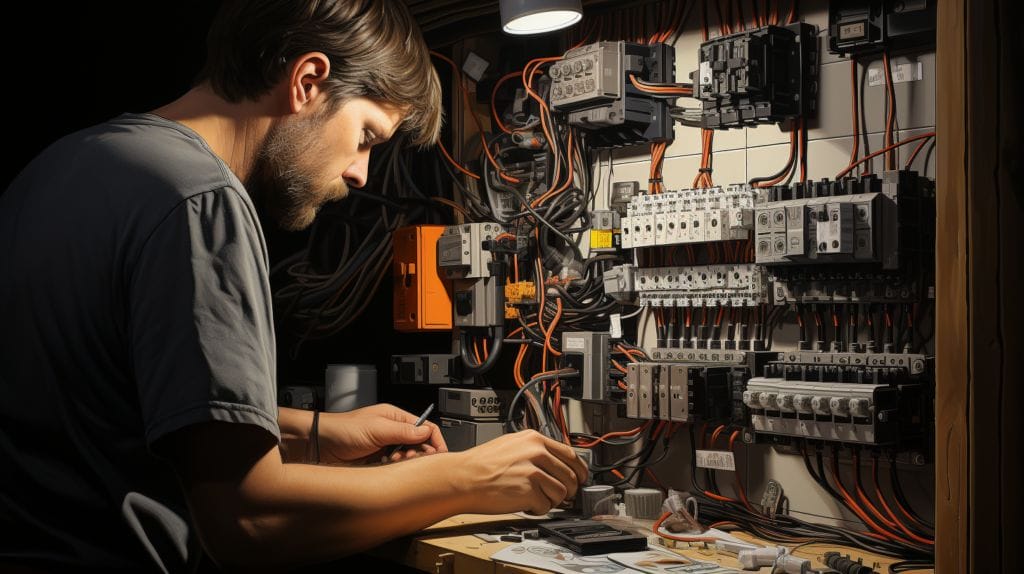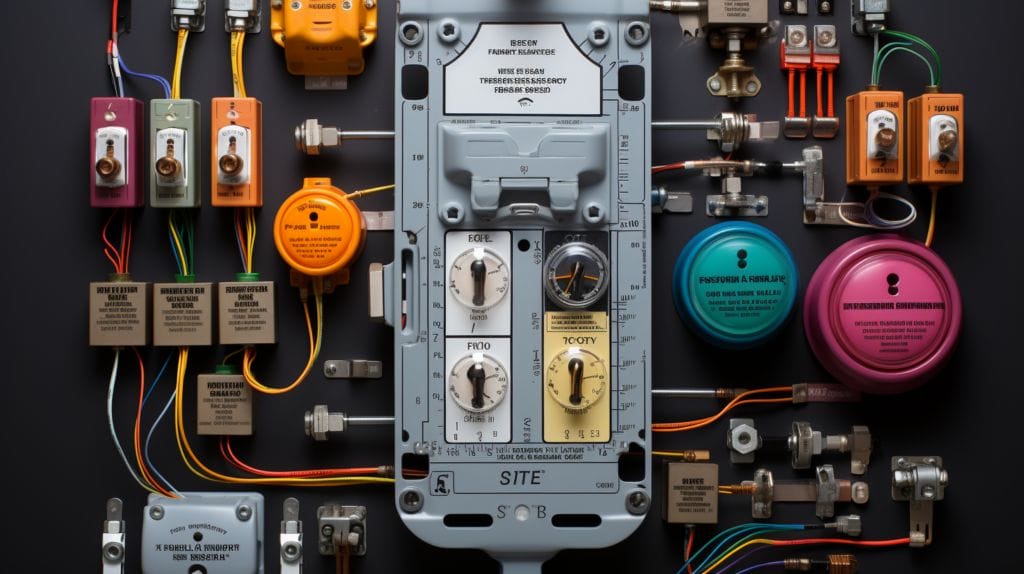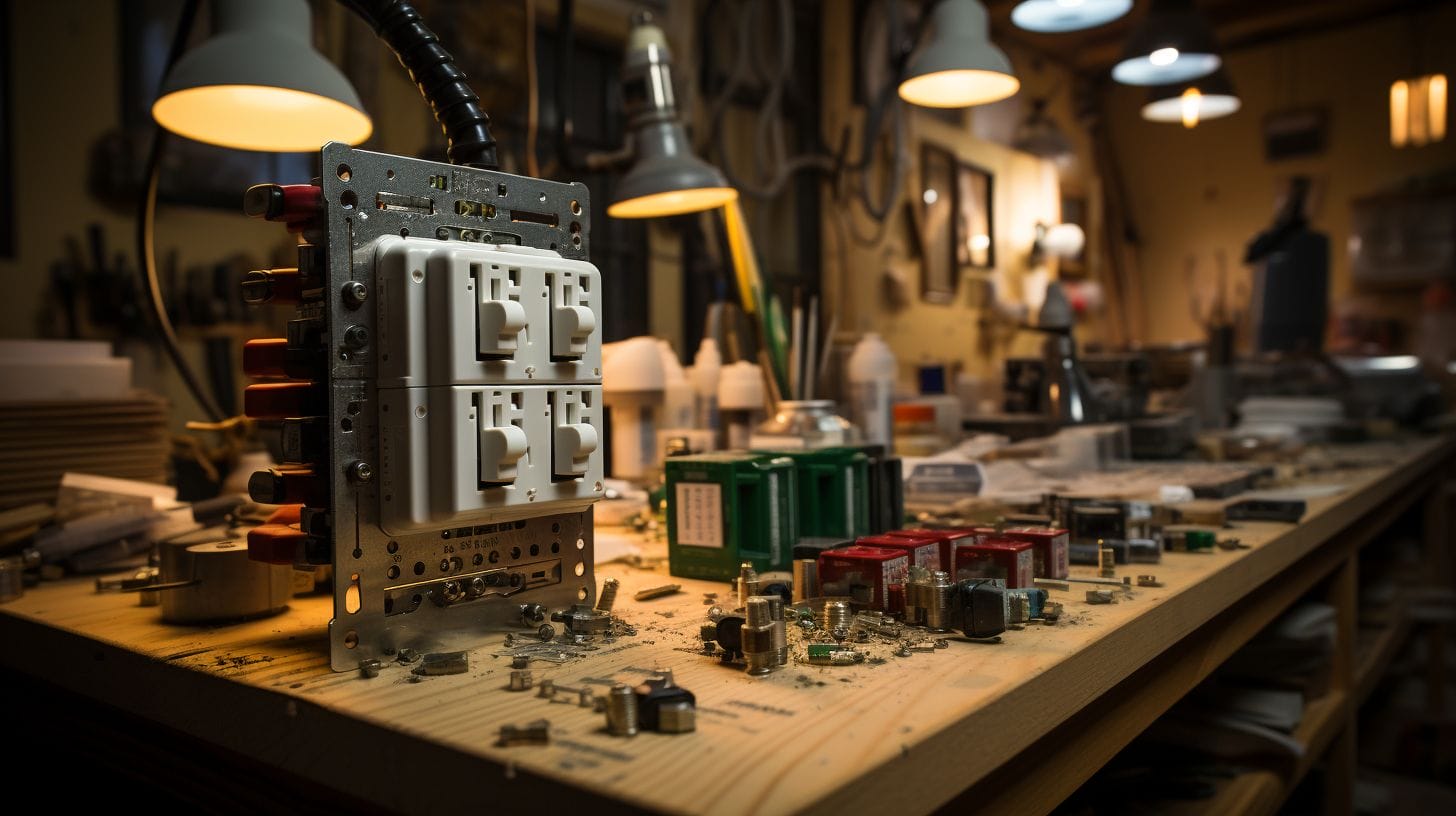Wiring a Light Switch From a Receptacle: Your DIY Guide
Have you ever wondered if it’s feasible for an everyday homeowner to wire a light switch from a receptacle without calling in a professional? With a little patience, the right tools, and a solid understanding of your home’s electrical system, this task is entirely doable.
From understanding the key terms such as receptacles, outlets, switches, neutral wires, and terminals, to following wiring diagrams and instructions, you will be able to handle even special cases, such as wiring a GFCI receptacle, controlling multiple lights, and adding a new light.
Above all, in our ‘Wiring a Light Switch From a Receptacle’ guide, we will include the safety precautions such as securing the end of the wire, avoiding common mistakes, and properly testing the installation and they are emphasized throughout.
Key Takeaways
- Understanding the key terms and components involved in wiring, such as receptacles, outlets, switches, neutral wires, and terminals.
- Following wiring diagrams and step-by-step instructions to ensure proper installation.
- Special cases, such as wiring a GFCI receptacle, installing a new switch, and adding a new light fixture, require specific techniques.
- Emphasizing the importance of safety precautions, avoiding common mistakes, and properly testing and troubleshooting the installation.
Wiring a Light Switch from a Receptacle: Your DIY Guide

Before we dive into the nitty-gritty of wiring a light switch from a receptacle, let’s familiarize ourselves with a few key terms. A receptacle, often called an outlet, allows electrical equipment to connect to the power supply.
An electrician would use a black wire to connect the line and load. We’re using it as a source to power our light switch. The single-pole wall switch itself interrupts or diverts the electrical circuit’s flow to control lighting through the terminal on the receptacle.
A neutral wire, typically white or gray, returns electricity to the source after powering the light. This wire plays a crucial role as it completes the circuit. The process involves connecting wires from the receptacle to the switch using a terminal, a type of connector that allows the wire to connect to the switch, and a screw that secures the wire to the terminal. Ensuring a secure connection is paramount for your safety and the functionality of your project.
How an Outlet Works: Understanding Outlets and Switches

After familiarizing ourselves with the key terms, let’s dig deeper into how an outlet functions and the interrelation between outlets and switches. An outlet houses the wiring connections for your devices to connect to the power source.
The main components of an outlet are the ‘line’ and ‘load’ terminals, the hot wire, and the neutral or white wire. The ‘line’ terminal is where the power comes in, and the ‘load’ terminal is where the electricity goes out to other outlets or switches. The hot wire carries electricity from the ‘line’ terminal, and the neutral wire returns the electricity to the ‘load’ terminal, completing the circuit.
When we flip a switch, it either connects or disconnects the hot wire, turning the power on or off. In the case of a three-way switch, it redirects the hot wire between two paths, allowing us to control a light from two locations.
Wiring Diagrams and Step-by-Step Instructions for Wiring a Switch

Our wiring diagrams are designed for simplicity and clarity, making them perfect for DIY enthusiasts like you. They’ll help you visualize the circuitry involved in wiring a switch, ensuring you understand how the current flows from the receptacle to the light switch.
Our step-by-step instructions will guide you from turning off the circuit breaker for safety, identifying the wires, connecting them to the correct terminals on the switch, to finally testing the switch to ensure it’s functioning correctly. We’ll also cover how to handle different switch types: installing a three-way switch, a smart switch, or a dimmer.
Special Cases: Wiring GFCI Receptacle, Multiple Lights, and New Light

Venturing into special cases like wiring a GFCI receptacle, controlling multiple lights with a switch, and wiring a new light might require a little extra effort, but they’re no match for a determined DIYer. For GFCI receptacles, it’s crucial to connect the ‘load’ and ‘line’ terminals correctly.
When wiring multiple lights, connect them in parallel to independently control power to each light. In wiring a new light, run a new cable from the switch box to the new light location, connect the black wire to the terminal on the receptacle, and secure the wires accordingly.
In summary, remember these pointers:
- For GFCI receptacles, correctly identify and connect the ‘load’ and ‘line’ terminals.
- When wiring multiple lights, connect them in parallel to independently control power to each light.
- In wiring a new light, run a new cable from the switch to the new light location and connect wires accordingly.
Wrapping it Around Correctly: Connections, Terminal Screws, and Clockwise Wiring

Attaching wires to terminal screws might seem like a cinch, but it’s critical to get the black and white wire right. Ensure that the wire is firmly wrapped around the screw, but avoid excessive force that could weaken the wire or damage the screw. The wire should be snug and secure, providing a solid connection.
The black wire, in particular, should be well-connected to one of the secure points on the terminal, and the bare copper wire is connected to the ground screw for safety. Wrapping it around correctly, specifically clockwise around the terminal screw, ensures that as you tighten the screw, the wire is pulled further into the connection rather than being pushed out, creating a stronger and safer bond.
Before flipping that switch, always check your fixtures and test your connections. Use a voltage tester to confirm that the terminal screws and end of the wire aren’t live. This will prevent any potential shock hazards when adjusting or changing fixtures.
Conclusion
So, we’ve successfully wired a light switch from a receptacle to the electrical box! It’s not as daunting as it seems, right?
Whether it’s wiring a simple switch or dealing with GFCI receptacles and multiple lights, we’ve got it covered. Remember, it’s all about making the right connections, using terminal screws, and following the clockwise wiring rule.
Now, you’ve got the know-how to DIY with confidence!
Frequently Asked Questions
Can I wire a light switch from a receptacle?
Yes, you can wire from the switch a light switch from a receptacle. This is a common DIY electrical project that can be accomplished with the right tools and knowledge.
What is a wiring diagram and do I need one for this project?
A wiring diagram is a visual representation of the electrical circuit, including how to wire to one new outlet and light fixture. While not always necessary for simple projects like installing a new switch, having a wiring diagram can be helpful, especially if you are wire from the switch to the new outlet.
How do I connect a switch to an outlet?
To connect a switch to an outlet, you will need to identify the hot and neutral wires and then connect them to the appropriate terminals on the switch and outlet.
What is the purpose of a neutral wire?
The neutral wire completes the electrical circuit and provides a return path for the current. A secure connection of the green ground wire is essential for the safe operation of electrical appliances and fixtures.
When should I use a breaker or pigtail when working with outlets and switches?
Breakers, pigtails, and insulation are used to protect the electrical circuit involving the old switch and ensure a safe connection. It’s important to use them as directed in your wiring project.
What is the difference between a three-way switch and a smart switch?
A three-way switch is used to control a light or set of lights from two separate locations, while a smart switch can be controlled remotely via a smartphone or other smart devices.







